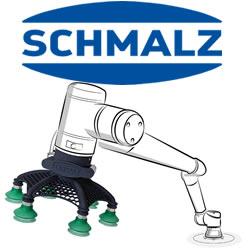Robots Learn to Perform Tasks by “Watching” YouTube Videos
DARPA program advances robots ability to sense visual information and turn it into action
Robots can learn to recognize objects and patterns fairly well, but to interpret and be able to act on visual input is much more difficult. Researchers at the University of Maryland, funded by DARPAs Mathematics of Sensing, Exploitation and Execution (MSEE) program, recently developed a system that enabled robots to process visual data from a series of "how to" cooking videos on YouTube. Based on what was shown on a video, robots were able to recognize, grab and manipulate the correct kitchen utensil or object and perform the demonstrated task with high accuracy—without additional human input or programming.
"The MSEE program initially focused on sensing, which involves perception and understanding of whats happening in a visual scene, not simply recognizing and identifying objects," said Reza Ghanadan, program manager in DARPAs Defense Sciences Offices. "Weve now taken the next step to execution, where a robot processes visual cues through a manipulation action-grammar module and translates them into actions."
Another significant advance to come out of the research is the robots ability to accumulate and share knowledge with others. Current sensor systems typically view the world anew in each moment, without the ability to apply prior knowledge.
"This system allows robots to continuously build on previous learning—such as types of objects and grasps associated with them—which could have a huge impact on teaching and training," Ghanadan said. "Instead of the long and expensive process of programming code to teach robots to do tasks, this research opens the potential for robots to learn much faster, at much lower cost and, to the extent they are authorized to do so, share that knowledge with other robots. This learning-based approach is a significant step towards developing technologies that could have benefits in areas such as military repair and logistics."
The DARPA-funded researchers presented their work today at the 29th meeting of the Association for the Advancement of Artificial Intelligence. The University of Maryland paper is available here: http://ow.ly/I30im
Featured Product

